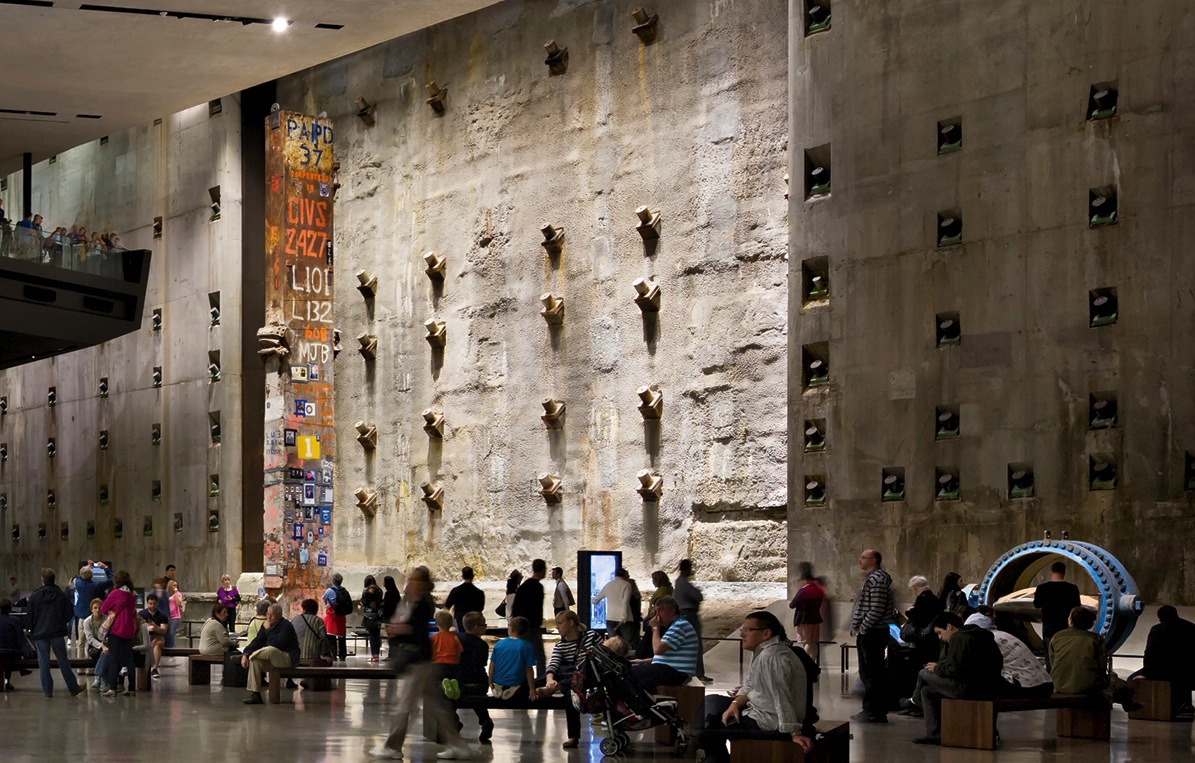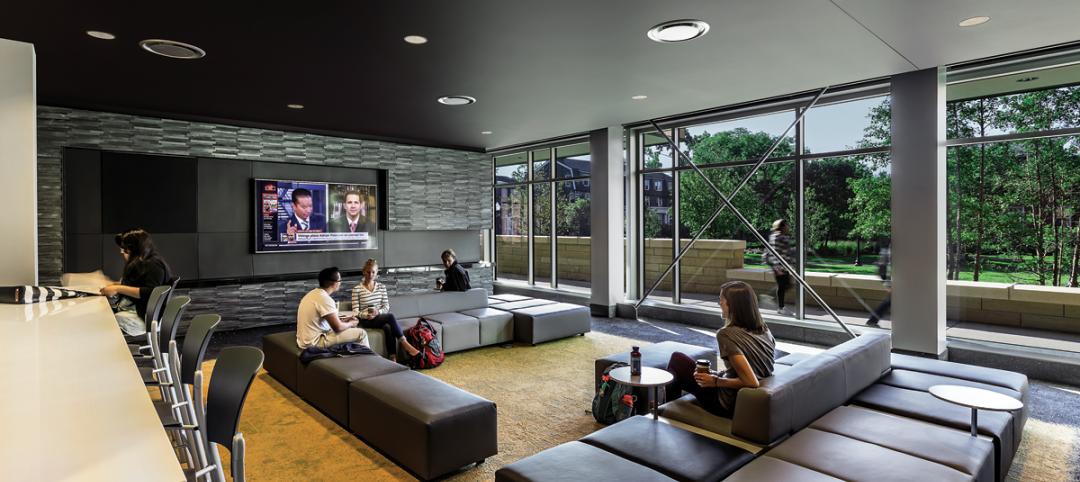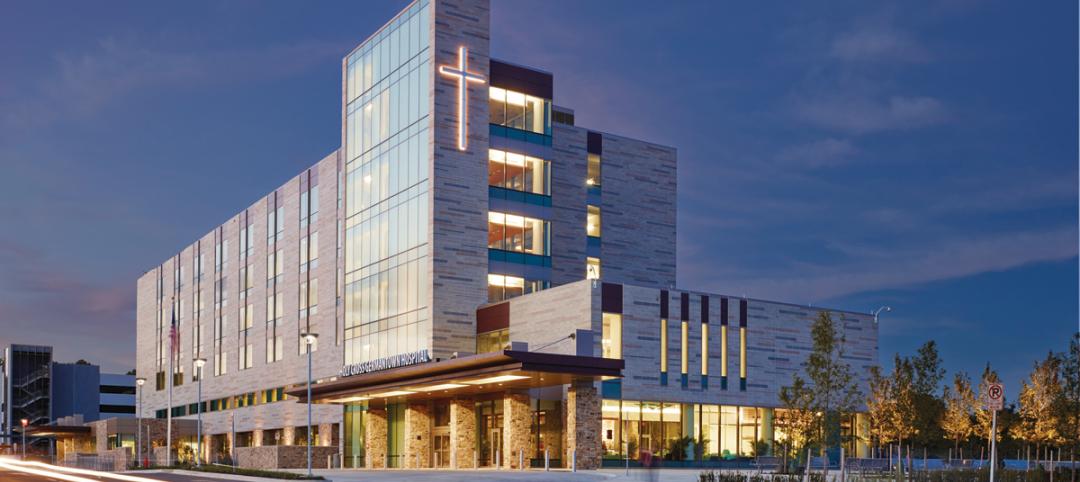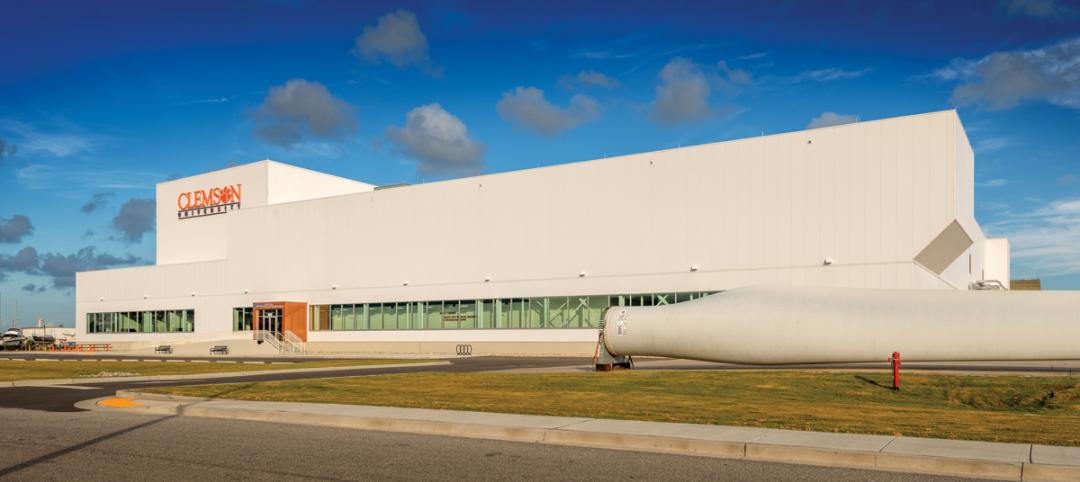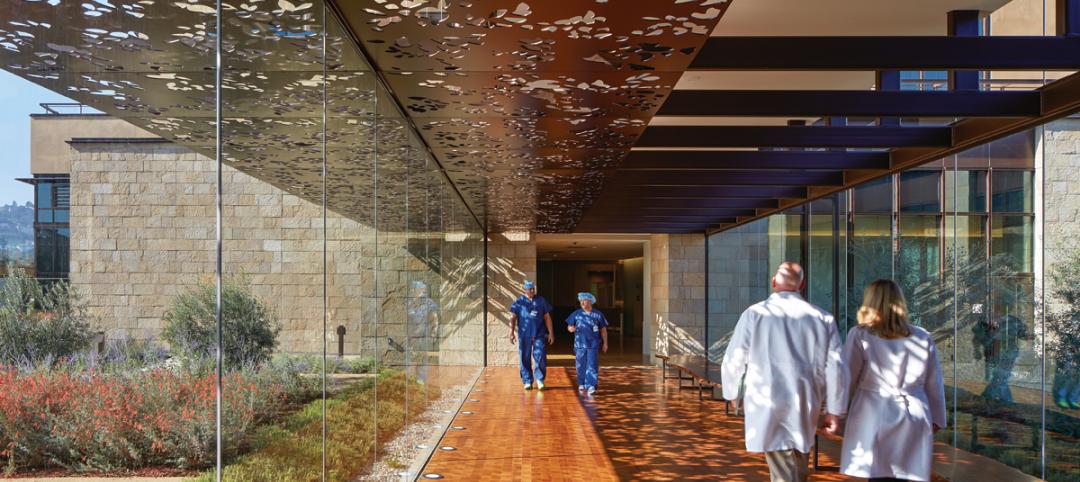The National September 11 Memorial Museum may have been a relatively small part of the 16-acre World Trade Center mega-project, which included the building of four commercial towers and a massive transportation hub. But the museum’s construction was no less complex, and was complicated by enormous—and at times conflicting—political, public, and emotional considerations that ultimately influenced its design, budget, and scheduling.
PROJECT SUMMARY
GOLD AWARD
National September 11 Memorial Museum
New York, N.Y.BUILDING TEAM
Submitting firm: Davis Brody Bond (architect)
Owner/developer: National September 11 Memorial and Museum
Structural engineer: WSP Cantor Seinuk (slurry wall): Simpson Gumpertz & Heger; Guy Nordenson & Associates Structural Engineers
Geotechnical engineer: Langan Engineering & Environmental Services (slurry wall): Mueser Rutledge Consulting Engineers
MEP engineer/vertical transport: Jaros Baum & Bolles
Blast design: Weidlinger Associates
Code consultant: Code Consultants, Inc.
Acoustical/vibration design: Cerami & Associates
Lighting design: Fisher Marantz Stone
Graphic design: C&G Partners
Cost estimating: Faithful + Gould
Historic preservation: Higgins Quasebarth & Partners
Security design: Arup
Building envelope/waterproofing: Wiss, Janney, Elstner Associates
Specifications: Construction Specifications, Inc.
GC/CM: Lend LeaseGENERAL INFORMATION
Project size: 775,000 sf (Museum: 268,000 sf; chiller plant: 163,000 sf)
Construction cost: $700 million (museum and memorial)
Construction period: August 2006 to May 2014
Delivery method: Construction management
“The 9/11 Museum combines all of the building trades, as well as collective memory, bureaucracy, and ideology,” says SmithGroupJJR’s Bill Kline, AIA, EDAC, LEED AP, a Building Team Awards judge. “It is a design and technical achievement in a context fraught with controversy and contradiction.”
The design needed to take into account the various opinions and agendas of more than 30 consulting parties, including government agencies, preservationists, and groups that represented the surrounding community and survivors and victims of the attacks.
Through that process, the Building Team, led by architect Davis Brody Bond, became acutely aware of the importance of preserving certain artifacts of the former Twin Towers, notably its north and south footprints and the remaining slurry wall. The design evolved into a series of spaces that evokes both the scale of the loss and the still-resonant physical impressions left by the towers.
Some of the artifacts—specifically, the “Survivors’ Stair” and “Last Column”—were so large and heavy that GC/CM Lend Lease had to install them in their designated exhibition locations before the walls, floors, and roof could be constructed around them.
The Building Team’s architectural and materials choices centered on enhancing the visitor experience and articulating four core design principles: Memory, Authenticity, Scale, and Emotion.
Within the museum’s excavation are two new insertions: the Tower Volumes, which align with the footprints of the original Twin Towers and the reflecting pools within the 9/11 Memorial; and the Ribbon, a ramp between the Tower Volumes that brings visitors to the bedrock level.
The museum lies 70 feet below street level, beneath the eight-acre 9/11 Memorial that doubles as the museum’s green roof. Politicians had committed to opening the Memorial Plaza on the 10th anniversary of the attacks. So the museum and memorial needed to define project boundaries and coordinate shared superstructure and site utilities for economy and logistics, as well as coordinate project schedules and shared costs.
Project planning and coordination also helped avert what could have been a crippling blow when Hurricane Sandy blew into New York in late October 2012.
The superstorm flooded the primary level of the museum with eight feet of water, threatening to delay the museum’s opening by six months. By adjusting work schedules and reallocating work forces to higher levels of the museum while flood remediation was under way, the cleanup and reconstruction efforts were completed in only three months.
In that process, the cooperation of the full Building Team, including materials suppliers, vendors, and fabricators, minimized Sandy’s impact and helped this project hit its completion target.
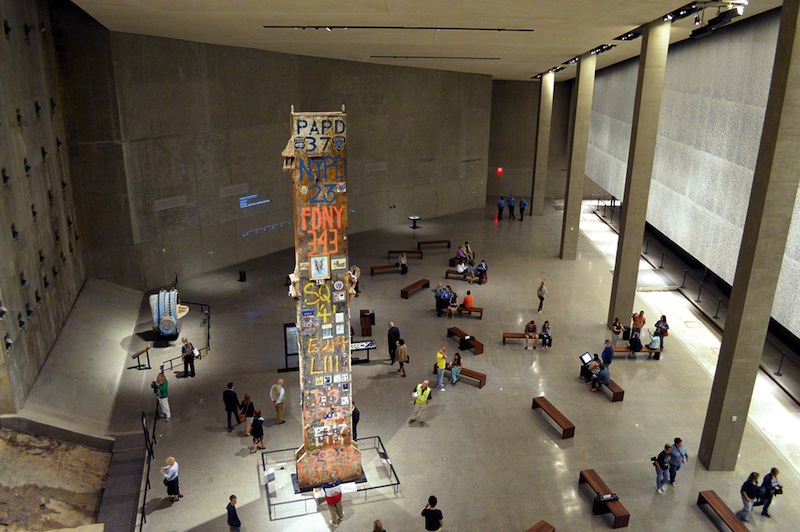 The Last Column needed to be lowered into its position before the street-level Memorial Plaza could be completed.
The Last Column needed to be lowered into its position before the street-level Memorial Plaza could be completed.
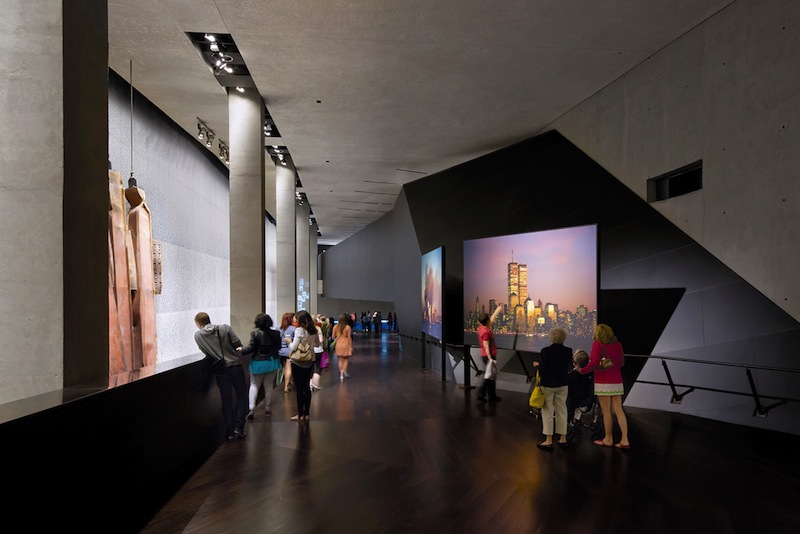 Visitors to the museum enter its main spaces through a ramped descent that offers them “Progressive Disclosure” of exhibits that are not quite close enough to touch and, therefore, enhance “Emotion,” one of the museum’s four core design principles, along with Memory, Authenticity, and Scale.
Visitors to the museum enter its main spaces through a ramped descent that offers them “Progressive Disclosure” of exhibits that are not quite close enough to touch and, therefore, enhance “Emotion,” one of the museum’s four core design principles, along with Memory, Authenticity, and Scale.
Related Stories
Building Team Awards | Apr 9, 2015
Big D’s billion-dollar baby: New Parkland Hospital Tops the Chart | BD+C
Dallas’s new $1.27 billion public hospital preserves an important civic anchor, Texas-style.
Building Team Awards | Apr 9, 2015
IPD-driven fusion facility serves science and student life in Chicago
In dire need of modern science labs and a student union, North Park University built both—in the same building.
Building Team Awards | Apr 9, 2015
‘Prudent, not opulent’ sets the tone for this Catholic hospital
This Building Team stuck with a project for seven years to get a new hospital built for a faithful client.
Building Team Awards | Apr 7, 2015
Unique test facility will help make wind power more feasible
A new facility at Clemson University makes it possible to test the huge stresses that large-scale wind turbines must be able to withstand.
Building Team Awards | Apr 5, 2015
UK's leading foot and mouth disease lab turns containment design inside out
A daring Building Team breaks the bunker mentality common to research containment with this light-filled, open facility in the English countryside.
Building Team Awards | Apr 5, 2015
‘Project first’ philosophy shows team’s commitment to a true IPD on the San Carlos Center
Skanska and NBBJ join forces with Sutter Health on a medical center project where all three parties share the risk.


